Perfect Basmati Rice: A Step-by-Step Guide
This post may contain affiliate links. Read my full disclosure policy.
Learn how to cook fragrant basmati rice to perfection—tender, fluffy, and just right for soaking up your favorite curries and more.
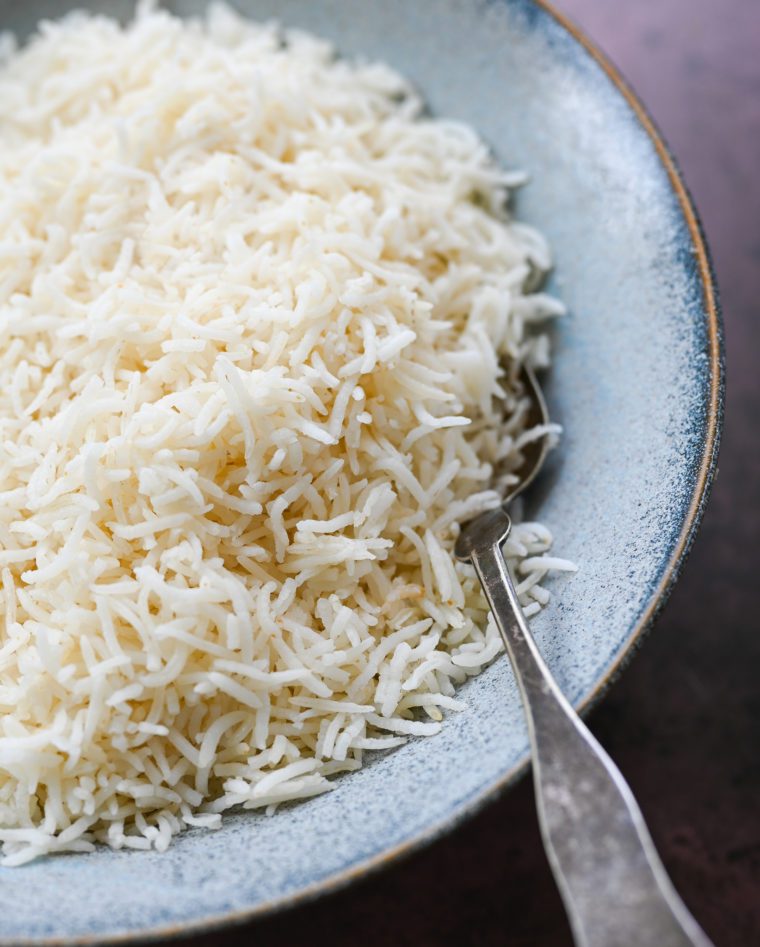
Basmati is a fragrant long grain rice grown in the Himalayas and Pakistan known for its nutty flavor. “Bas” in Hindi language means “aroma” and “mati” means “full of,” hence the word Basmati — or “full of aroma.” The key to making perfect basmati rice is to start with a high-quality brand of rice, preferably one imported from India or Pakistan. I love using Jyoti Basmati Supreme—it’s labeled “very long grain” and expands beautifully when cooked. It’s also important to rinse the rice under running water for a minute or two before cooking. This releases excess starch and prevents the grains from sticking together once cooked; the texture of basmati rice should be tender and fluffy, and the grains should be separate from one another.
Basmati rice makes a perfect side dish to many dishes, such as chicken curry, mulligatawny, butter chicken, chicken tikka masala, and tandoori chicken, to name just a few.
Table of Contents
“This truly is the perfect basmati rice! Tried and true, this recipe never fails…much better than the package directions!”
What You’ll Need To Make Basmati Rice
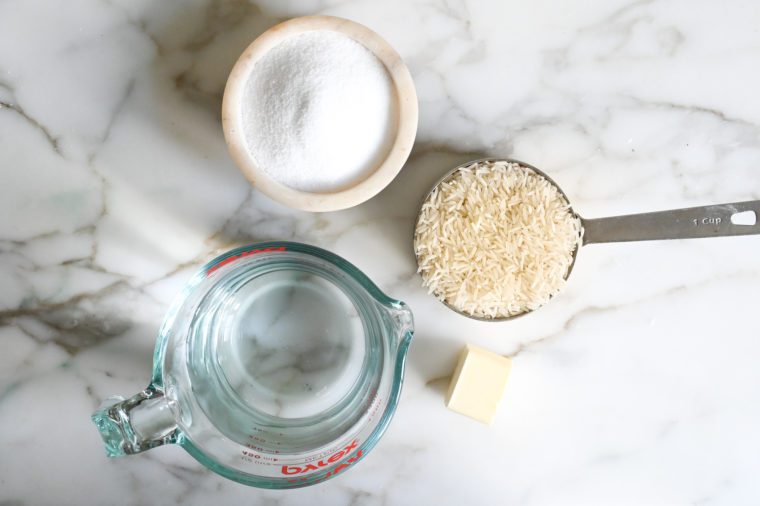
Step-by-Step Instructions
To cook basmati rice, begin by placing the rice in a fine mesh strainer. Place under cold running water, swishing the rice with your hand, for 1 to 2 minutes to release excess starch. (Alternatively, place the rice in a medium bowl and add enough water to cover by 2 inches. Using your hands, gently swish the grains to release any excess starch. Carefully pour off the water, leaving the rice in the bowl. Repeat four times, or until the water runs almost clear. Use a fine mesh strainer to drain the rice.)
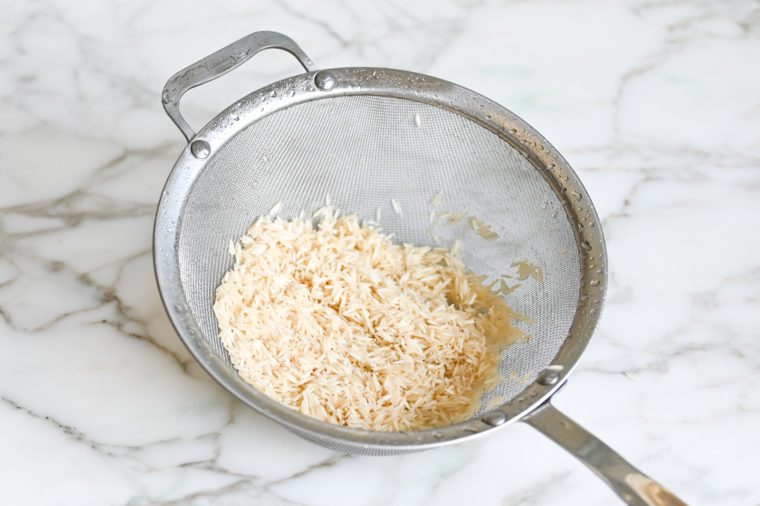
In a medium pot, combine the rice, water, butter, and salt. I use a ratio of 1 cup of rice to 1-3/4 cups of water.
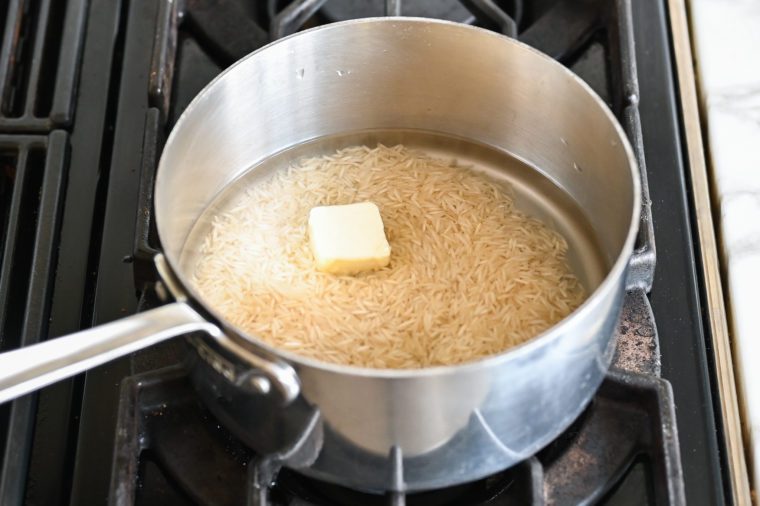
Bring to a boil.
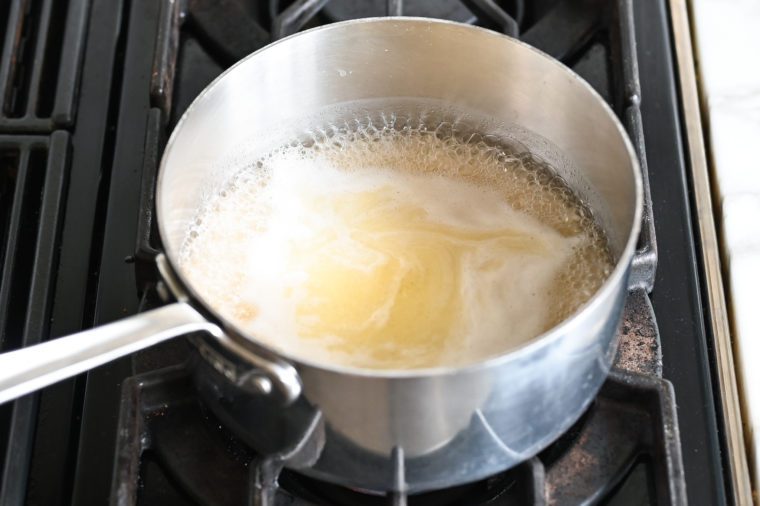
Cover the pot with a tight fitting lid and turn the heat down to a simmer.
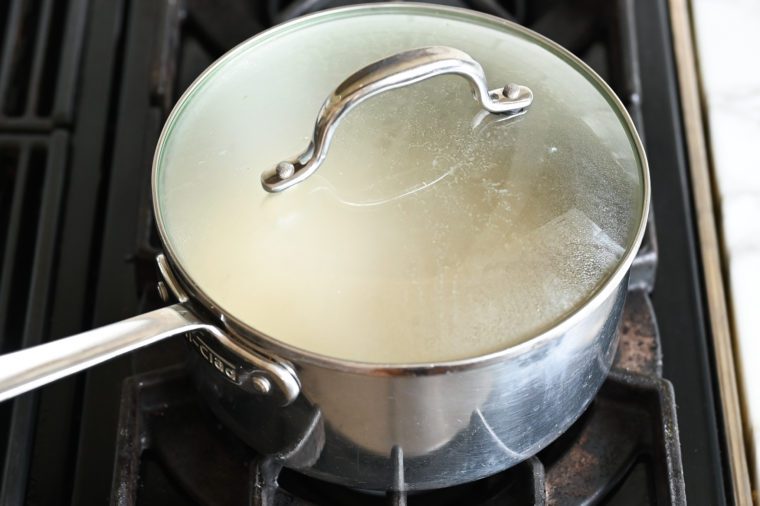
Cook for 15 to 20 minutes, until all of the water is absorbed and the rice is tender. If the rice is still too firm, add a few more tablespoons of water and continue cooking for a few minutes more.
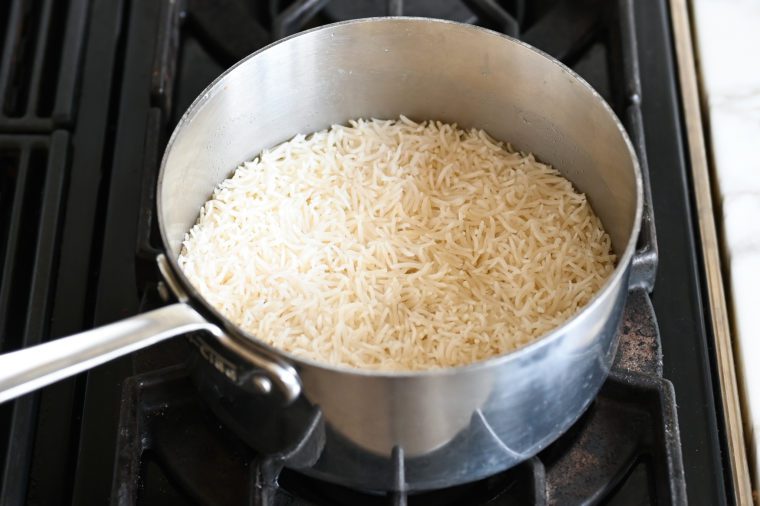
Remove the pan from the heat and allow it to sit covered for 5 minutes, then fluff the rice with a fork.
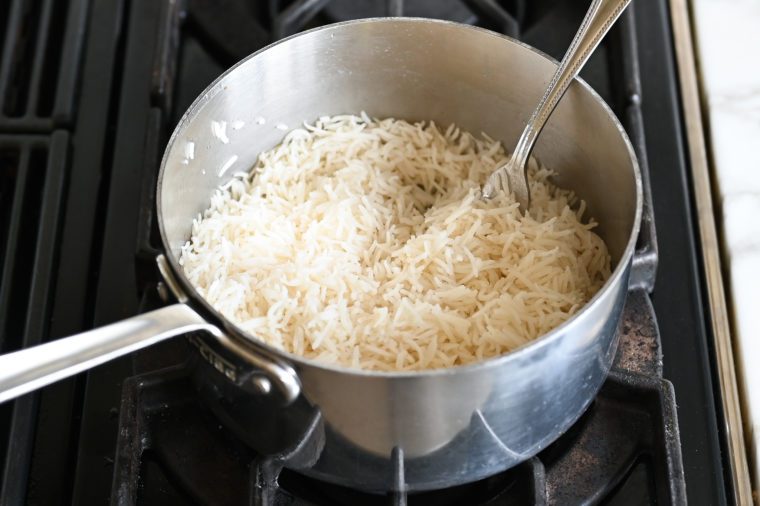
How To Store Basmati Rice
Store leftover basmati rice in an airtight container in the refrigerator for up to 4 days. To reheat it, place the rice in a microwave-safe bowl and add 1 to 2 tablespoons of water to help retain moisture. Cover the bowl with a damp paper towel or a microwave-safe lid. Microwave on high for 1 to 2 minutes, stirring halfway through to ensure even heating.
How To Freeze Basmati Rice
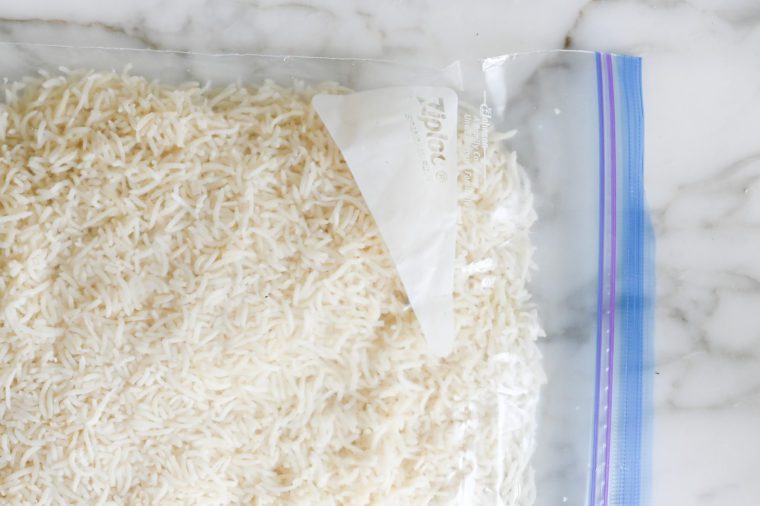
Basmati rice can be frozen in an airtight container for up to 3 months. For easier storage, flatten it out in sealable plastic bags to save space in the freezer. No need to thaw it before reheating—just remove it from the freezer and microwave with 1 to 2 tablespoons of water.

You May Also Like
Perfect Basmati Rice
Ingredients
- 1 cup basmati rice preferably imported from India or Pakistan
- 1¾ cups water
- 1½ tablespoons unsalted butter
- ½ teaspoon salt
Instructions
- Place the rice in a fine mesh strainer. Place under cold running water, swishing the rice with your hand, for 1 to 2 minutes to release excess starch. (Alternatively, place the rice in a medium bowl and add enough water to cover by 2 inches. Using your hands, gently swish the grains to release any excess starch. Carefully pour off the water, leaving the rice in the bowl. Repeat four times, or until the water runs almost clear. Use a fine mesh strainer to drain the rice.)
- In a medium pot, bring the rice, water, butter, and salt to a boil. Cover the pot with a tight fitting lid, then turn the heat down to a simmer and cook for 15 to 20 minutes, until all of the water is absorbed and the rice is tender. If the rice is still too firm, add a few more tablespoons of water and continue cooking for a few minutes more. Remove the pan from the heat and allow it to sit covered for 5 minutes. Fluff the rice with a fork and serve.
Notes
Nutrition Information
This website is written and produced for informational purposes only. I am not a certified nutritionist and the nutritional data on this site has not been evaluated or approved by a nutritionist or the Food and Drug Administration. Nutritional information is offered as a courtesy and should not be construed as a guarantee. The data is calculated through an online nutritional calculator, Edamam.com. Although I do my best to provide accurate nutritional information, these figures should be considered estimates only. Varying factors such as product types or brands purchased, natural fluctuations in fresh produce, and the way ingredients are processed change the effective nutritional information in any given recipe. Furthermore, different online calculators provide different results depending on their own nutrition fact sources and algorithms. To obtain the most accurate nutritional information in a given recipe, you should calculate the nutritional information with the actual ingredients used in your recipe, using your preferred nutrition calculator.
Gluten-Free Adaptable Note
To the best of my knowledge, all of the ingredients used in this recipe are gluten-free or widely available in gluten-free versions. There is hidden gluten in many foods; if you're following a gluten-free diet or cooking for someone with gluten allergies, always read the labels of your ingredients to verify that they are gluten-free.

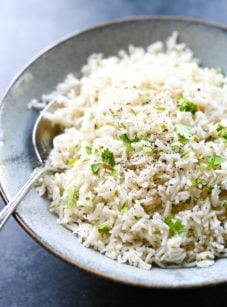
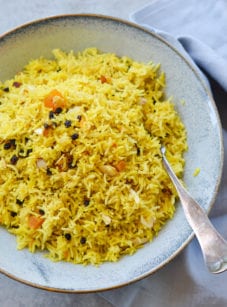

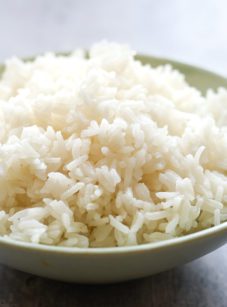
I doubled the recipe and the rice came out perfectly! Thank you!
Do you keep the time the same when you double?
Hi Zaina, It should be around the same time, but, prior to removing it from the heat, make sure you check it to see if all the water is absorbed and the rice is tender. If not, give it an extra minute or two.
I have avoided Basmati rice because the one time I made it, it came out terrible. With that said, I am absolutely thrilled that this recipe turns out perfectly every time I make it!! I follow it exactly as written and have no issues.
Jennifer – Thanks to your recipe we had the best Basmati rice I ever cooked at home. I was surprised to see salt and butter in the recipe, but it makes the end product so flavoursome! I cooked the rice less long though as the suggested time was only 10-12 min, so I stuck to that.
Amazing result – I can highly recommend it.
How to cook brown basmati rice in a rice cooker? What is the proper ratio?
Hi Shahesta, I don’t have experience using a rice cooker, but you may find these tips helpful.
Awesome recipe! I could never make fluffy basmati rice until now. Thank you so much!!!
Rinse the rice & it soak for about 30 mins to get non sticky grains. Also one alternative of making basmati rice is boiling rice with a lot water (approx 3-4 cups of water for 1 cup of rice) until cooked and then draining the extra water. That way you wouldn’t need to measure any ingredients. Also here in India, we don’t usually add salt or butter to plain rice. Some people might add ghee to cooked rice. Hope you try making rice using this method. Do let me know how it turns out.
Hi Soloni. Prior to cooking, I prepared the rice using your recommendation, and it worked out beautifully. Thanks for the tip.
Gujarati here. My family always added salt and ghee to our rice. Back when we did the stove top method and the current – and vastly superior – rice cooker.
second the rinse and soak for the rice. Basmati always needed that soak.
And for the basmati – it’s usually more than salt and ghee. We usually have spices in it. I usually use the standard long grain rice for kichidee. The basmati was always for the meals we wanted special which means biriyani or something like that with a meat associated with it. Or kheer. You can’t make kheer without basmati.
To anyone who is reading this.. do try and look up how to make kheer. It’s just a rice pudding dessert and it’s delicious. If you’ve ever had ras malai, it’s very very similar to that.
Best tasting rice I ever cooked. I will always cook my rice this way.
Thank you, thank you thank you! I have been struggling with making rice and this method worked beautifully! No more gummy rice!
Doubled the recipe came out perfectly used olive oil instead of butter. Its a keeper. Thanks.
I doubled the recipe. The rice came out perfect!